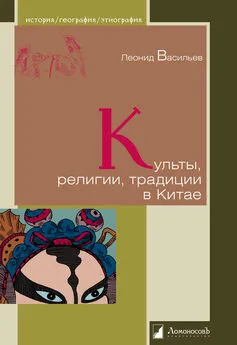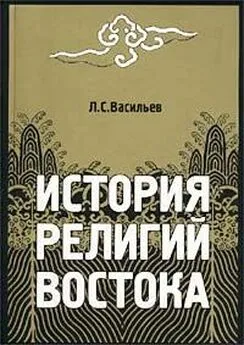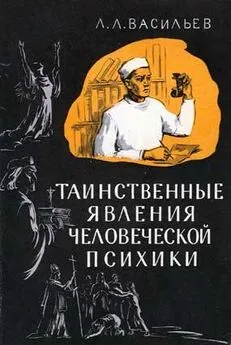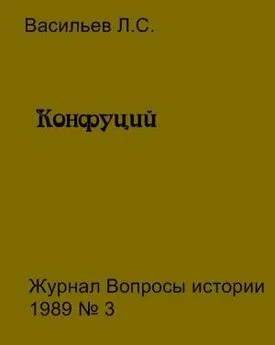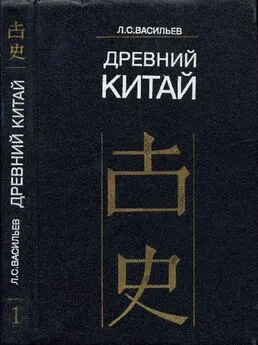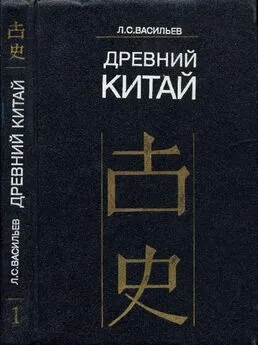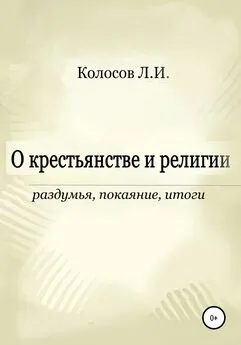Леонид Васильев - Культы, религии, традиции в Китае
- Название:Культы, религии, традиции в Китае
- Автор:
- Жанр:
- Издательство:Литагент «Ломоносовъ»77e9a3ea-78a1-11e5-a499-0025905a088e
- Год:2015
- Город:Москва
- ISBN:978-5-91678-254-7
- Рейтинг:
- Избранное:Добавить в избранное
-
Отзывы:
-
Ваша оценка:
Леонид Васильев - Культы, религии, традиции в Китае краткое содержание
Книга Леонида Васильева адресована тем, кто хочет лучше узнать и понять Китай и китайцев. Она подробно повествует о том, , как формировались древнейшие культы, традиции верования и обряды Китая, как возникли в Китае конфуцианство, даосизм и китайский буддизм, как постепенно сложилась синтетическая религия, соединившая в себе элементы всех трех учений, и как все это создало традиции, во многом определившие китайский национальный характер. Это рассказ о том, как традиция, вобравшая опыт десятков поколений, стала образом жизни, в основе которого поклонение предкам, почтение к старшим, любовь к детям, благоговение перед ученостью, целеустремленность, ответственность и трудолюбие. А также о том, как китайцам удается на протяжении трех тысяч лет сохранять преемственность своей цивилизации и обращать себе на пользу иноплеменные влияния, ничуть не поступаясь собственными интересами. Леонид Васильев (1930) – доктор исторических наук, профессор, главный научный сотрудник Института востоковедения Российской АН.
Культы, религии, традиции в Китае - читать онлайн бесплатно ознакомительный отрывок
Интервал:
Закладка:
480. Hоun F. W., Chinese Political Traditions, Washington, 1965.
481. Hsiao Kung-chuan, Legalism and Autocracy in Traditional China, – «Tsing Hua Journal of Chinese Studies», n. ser., vol. IV, 1964, № 2.
482. Hsieh Yu-wei, Filial Piety and Chinese Society, – PCEW, 1962.
482a. Hsieh Yu-wei, The Status of Individual in Chinese Ethics, – CM. 483. Hsu Cho-yun, Ancient China in Transition, Stanford, 1965.
484. Hsu F. L. K., The Myth of Chinese Family Size, – AJS, vol. XLVIII, 1943, № 5.
485. Hsu F. L. К., Under the Ancestor’s Shadow. Chinese Culture and Personality, New York, 1948.
486. Hsu F. L. K., Americans and Chinese: Two Ways of Life, New York, 1953.
487. Hsu F. L. K., Clan, Caste and Club, Princeton, 1963.
488. Hu Hsien Chin, The Common Descent Group in China and its Functions, New York, 1948.
489. Hu Shih, Religion and Philosophy in Chinese history, Shanghai, 1931.
490. Hu Shih, Development of Zen Buddhism in China, – «The Chinese Social and Political Science Review», vol. XV, 1932, № 4.
491. Hu Shih, The Chinese Renaissance, Chicago, 1934.
492. Hu Shih, Ch’an (Zen) Buddhism in China: Its History and Method, – PEW, vol. Ill, 1953, № 1.
493. Hu Shih, The Scientific Spirit and Method in Chinese Philosophy, – PCEW.
494. Hu Shih, The Development of the Logical Method in Ancient China, New York, 1963.
495. Hu Shih, The Right to Doubt in Ancient Chinese Thought, – PEW, vol. XIII, 1966, № 4.
496. Huang Siu-chi, Musical Art in Early Confucian Philosophy, – PEW, vol. XIII, 1963, № 1.
497. Huang Siu-chi, Chang Tsai’s Concept of Ch’i, – PEW, vol. XVIII, 1968, № 4.
498. Huard P. et Wong M., La médicine chinoise au cours des siècles, Paris, 1959.
499. Hücker С. О., Governmental Organization of the Ming Dynasty, – HJAS, vol. XXI, 1958.
500. Hücker С. О., Confucianism and the Chinese Censorial System, – CAc.
501. Hücker С. О., The Censorial System of Ming China, Stanford, 1966. 502. Hughes E. R., The Great Learning and the Mean-in-action, New York, 1943.
503. Hughes E. R., Epistemological Methods in Chinese Philosophy, – CM 504. Hughes E. R., Hughes K., Religion in China, London, 1950.
505. Hummel A. W., The Art of Social Relations in China, – PEW, vol. X, 1960, № 1 – 2.
506. Hung Tzu-ch’eng, A Chinese Garden of Serenity. Reflections of a Zen Buddhist, New York, 1959.
507. Imbault-Huart C., La légende du premier pape des taoistes et l’histoire de la famille pontificale des Tcnang, Paris, 1885.
508. James E. O., Prehistoric Religion, London, 1957.
509. Jan Yün-hua, Buddhist Relations Between India and Sung China, – HR, vol. VI, 1966, № 1 – 2.
510. Johnstоn R. F., Confucianism and Modern China, New York, 1935. 511. Кaizuкa S., Confucius, London – New York, 1956.
512. Karlbeck O., Anyahg Marble Sculpture, – BMFEA, № 7, 1935.
513. Каrlgren В., Some Fecundity Symbols In Ancient China, – BMFEA, № 2, 1930.
514. Karlgren В., The Exhibition of Early Chinese Bronzes, – BMFEA, № 6, 1934.
515. Karlgren В., Yin and Chou in Chinese Bronzes, – BMFEA, № 8, 1936.
516. Karlgren В., New Studies on Chinese Bronzes, – BMFEA, № 9, 1937.
517. Karlgren B., Huai and Han, – BMFEA, № 13, 1941.
518. Karlgren В., Some Weapons and Tools of the Yin Dynasty, – BMFEA, № 17, 1945.
519. Karlgren В., Legends and Cults in Ancient China, – BMFEA, № 18, 1946.
520. Karlgren В., The Book of Documents, – BMFEA, № 22, 1950.
521 Karlgren В., A Catalogue of the Chinese Bronzes in the Alfred F. Pillsbury Collection, Minneapolis, 1952.
522. Karlgren В., Marginalia on Some Bronze Albums, – BMFEA, № 31, 1959.
523. Karlgren В., Some Characteristics of the Yin Art, – BMFEA, № 34, 1962.
524. Kelley C. F., Chinese Art (A Selection of Articles from the 14 ed. of Encyclopedia Britannica), London – New York, 1932.
525. Kelley C. F. and Ch’en Meng-chia, Chinese Bronzes from the Buckingham Collection, Chicago, 1946.
526. Klang Kang-Hu, The Chinese Family System, – «The Annals of the American Academy of Political and Social Science», Philadelphia. 1930. 527. Кiоng S., Quelques mots sur la politesse chinoise, Chanhai, 1906.
528. Кlineberg O., Social Psychology, New York, 1948.
529. Коppers W., Die Frage des Mutterrechts und der Totemismus im alten China, – «Anthropos», Bd XXV, 1930, № 5, 6.
530. Köster H., Symbolik des Chinesischen Universismus, Stuttgart, 1958.
531. Kou-Houng-Ming (Kou-Hong-Ming), L’esprit du peuple chinois, Paris, 1927.
532. Kou-Hong-Minget et Воrrey F., Le catechisme de Confucius, Paris, 1927.
533. Кгаске Е. А., Family vs. Merit hi Chinese Civil Service Examinations under the Empire, – HJAS, vol. X, 1947.
534. Kracke E. A., Civil Service in Early Sung China, 960 – 1067, Cambridge, Mass., 1953.
535. Kracke E. A., Region, Family and Individual in the Chinese Examination System, – CTI.
536. Kramers R. P., K’ung tzu chia yü. The School Sayings of Confucius, Leiden, 1950.
537. Kramers R. P., Der Konfuzianismus als Religion, – AS, Bd XVIII – IX, 1965.
538. Krause F. E. A., Ju-tao-fo. Die religiösen und philosophischen Systeme Ostasiens, München, 1924.
539. Kroeber A. L., Process in the Chinese Kinship System, – «American Anthropologist», n. ser., vol. XXXV, 1933, № 1.
540. Kulp D. H., Country Life in South China, New York, 1925.
541. Lamairesse E, L’empire chinois. Le Bouddhisme en Chine et au Thibet, Paris, 1893.
542. Lang O., Chinese Family and Society, New Haven, 1946.
543. «Lao-tse. Тао-Тe-King», übers. G. Debon, Stuttgart, 1961.
544. Latourette K. S., A Short History of the Far East, New York, 1957. 545. Laufer В., Jade: a Study in Chinese Archaeology and Religion, Loudon, 1946.
546. Le Roy Davidson J., The Riddle of the Bottle-Horn, – AA, vol. XXII, 1959, № 1 – 2.
547. Legge J., The Chinese Classics, Hongkong – London, 1861 – 1872. 548. Legge J., The Religions of China, London, 1880.
549. Legge J., The Li Ki, – «The Sacred Books of the East», ed. M. Müller, vol. XXVII – XXVIII. «The Sacred Books of China, the Texts of Confucianism», vol. I – II, Oxford, 1885.
550. Legge J., A Record of Buddhistic Kingdoms. Being an Account by the Chinese Monk Fa-Hsien of his Travels in India and Ceylon (A. D. 399 – 414) in Search of the Buddhist Books of Discipline, Oxford, 1886.
551. Legge J., The Life and Teachings of Confucius, London, 1909.
552. Legge J., The Texts of Taoism, New York, 1962.
553. Lessing F., Uber die Symbolsprache in der chinesischen Kunst, «Sinica», Jg. IX, 1934, № 3 – 4.
554. Lessing F., Bodhisatva Confucius, – «Oriens», vol. X 1957, № I.
555. Leumann E., Maitreya-samiti, das Zukunftsideal der Buddhisten, Strassburg, 1919.
556. Levenson J. R., The Suggestiveness of Vestiges: Confucianism and Monarchy at the Last, – CAc.
557. Levenson J. R., Confucian Chinа and its Modern Fate, vol. 1. The Problem of Intellectual Continuity, London, 1958; vol. 2. The Problem of Monarchical Decay, London, 1964; vol. 3. The Problem of Historical Significance, London, 1965.
558. Levеnsоn J. R., Modern China and its Confucian Past. The Problem of Intellectual Continuity, New York, 1964.
559. Levy H. S., Yellow Turban Religion and Rebellion at the End of Han, – JAOS, vol. 76, 1956, № 4.
560. Li Chi, The Formation of the Chinese People, Cambridge, 1928.
561. Li Chi, The Beginnings of Chinese Civilization, Seattle, 1957.
562. Li Ung Bing, Outlines of Chinese History, Shanghai, 1914.
563. Liang Ch’i-ch’ao, History of Chinese Political Thought, London, 1930.
564. Liang Si-ing, La rencontre et le conflit entre les idées des Missionnaires Chrétiens et les idées des Chinois en Chine depuis la fin de la dynastie des Ming, Paris, 1940.
565. Liao W. K., The Complete Works of Han Fei tzu, vol. I, London, 1939; vol. II, London, 1959.
566. Liebenthal W., On Trend in Chinese Thought, – SJ.
567. Lin T’ung-chi, The Taoist in Every Chinese, – THM, vol. XI, 1940 – 1941, № 3.
568. Lin Yutang, My Country and My People, London – Toronto, 1936. 569. Lin Yutang, A History of the Press and Public Opinion in China, Shanghai, 1936.
570. Lin Yutang, The Importance of Living, New York, 1938.
571. Lin Yutang, The Wisdom of China and India, London, 1949.
572. Lin Yutang, Imperial Peking. Seven Centuries of China, New York, 1961.
573. Link A. E., The Earliest Chinese Account of the Compilation of the Tripitaka, – JAOS, vol. 81, 1961, № 2 – 3.
574. Lionnet J., Lao Tse, Tao Те King, Paris, 1962.
575. Liu Hui-chen (Wang), The Traditional Chinese Clan Rules, New York, 1959.
576. Liu Hui-chen (Wang), An Analysis of Chinese Clan Rules: Confucian Theories in Action, – CAc.
577. Liu Т. C. J., Sung Roots of Chinese Political Conservatism: The Administrative Problems, – JAS, vol. XXVI, 1967, № 3.
578. Liu Ts’un-yan, Buddhist and Taoist Influences on Chinese Novels, vol. I. The Authorship of the Feng Shen Yen I, Wiesbaden, 1962.
579. Liu Wu-chi, A Short History of Confucian Philosophy, London, 1955.
580. Liu Wu-chi, Confucius. His Life and Time, New York, 1955.
581. Llewellyn В., China’s Courts and Concubines. Some People in Chinese History, London, 1951.
582. Loehr M., Zur Ur– und Vorgeschichte Chinas, – «Saeculum», Bd 3, 1952.
583. Loehr M., Chinese Bronze Age Weapons, Ann-Arbor – London, 1956.
584. Loewenstein P. J., Swastica and Yin-Yang, London, 1942.
585. Lu K’uan Yu (ed.), Ch’an and Zen Teaching, London, 1962.
586. Luk C. (Lu K’uan Yu), The Secrets of Chinese Meditation, London, 1964.
587. Lуall L. A. The Sayings of Confucius, London, 1935.
588. McClatchie Т., Confucian Theology, Shanghai, 1877.
589. Macgovan J., Lights and Shadows of Chinese Life, Shanghai, 1909. 590. Mailla J. A. M., de, Histoire générale de la Chine, ou Annales de cet Empire, Paris, 1777 – 1785.
591. Marsh R. M., The Mandarins, the Circulation of Elites in China, 1600 – l900, Glencoe, 1961.
592. Martin W. A., Essays on the History, Philosophy and Religion of the Chinese, Shanghai, 1894.
593. Mагtindale D., Social Life and Cultural Change, New York, 1962. 594. Masрérо Н., Le songe et l’ambassade de l’empereur Ming, etude critique des sources, – BEFEO, vol. X, 1910.
595. Masрérо H., Légendes mythologiques dans le Chou King, – JA, vol. CCII, 1924.
596. Masрérо H., Les origines de la communauté bouddhiste de Loyang, – JA, vol. CCXXV, 1934.
597. Masрérо H., Le serment dans la procédure judiciaire de la Chine Antique, – «Mélanges Chinois et Bouddhiques», t. III, 1934 – 1935.
598. Masрérо H., Les procédés de «Nourrir le principle vital» dans la religion taoïste ancienne, – JA, vol. CCXXIX, 1937.
599. Masрérо H., La religion chinoise dans son développement historique, – MPRHC, vol. I.
600. Masрérо H., La société et la religion des Chinois anciens et celles des Tai modernes, – MPRHC, vol. I.
601. Masрérо H., Comment le Bouddhisme s’est introduit en Chine, – MPRHC, vol. I.
602. Masрérо H., Le Taoïsme dans les croyances religieuses des Chinois à l’époque des six dynasties, – MPRHC, vol. II.
603. Masрérо H., Le poète Hi K’ang et le Club des Sept Sages de la Forêt de Bambous, – MPRHC, vol. II.
604. Masрérо H., Essai sur le Taoïsme aux premiers siècles de l’ère chrétienne, – MPRHC, vol. II.
Читать дальшеИнтервал:
Закладка:
